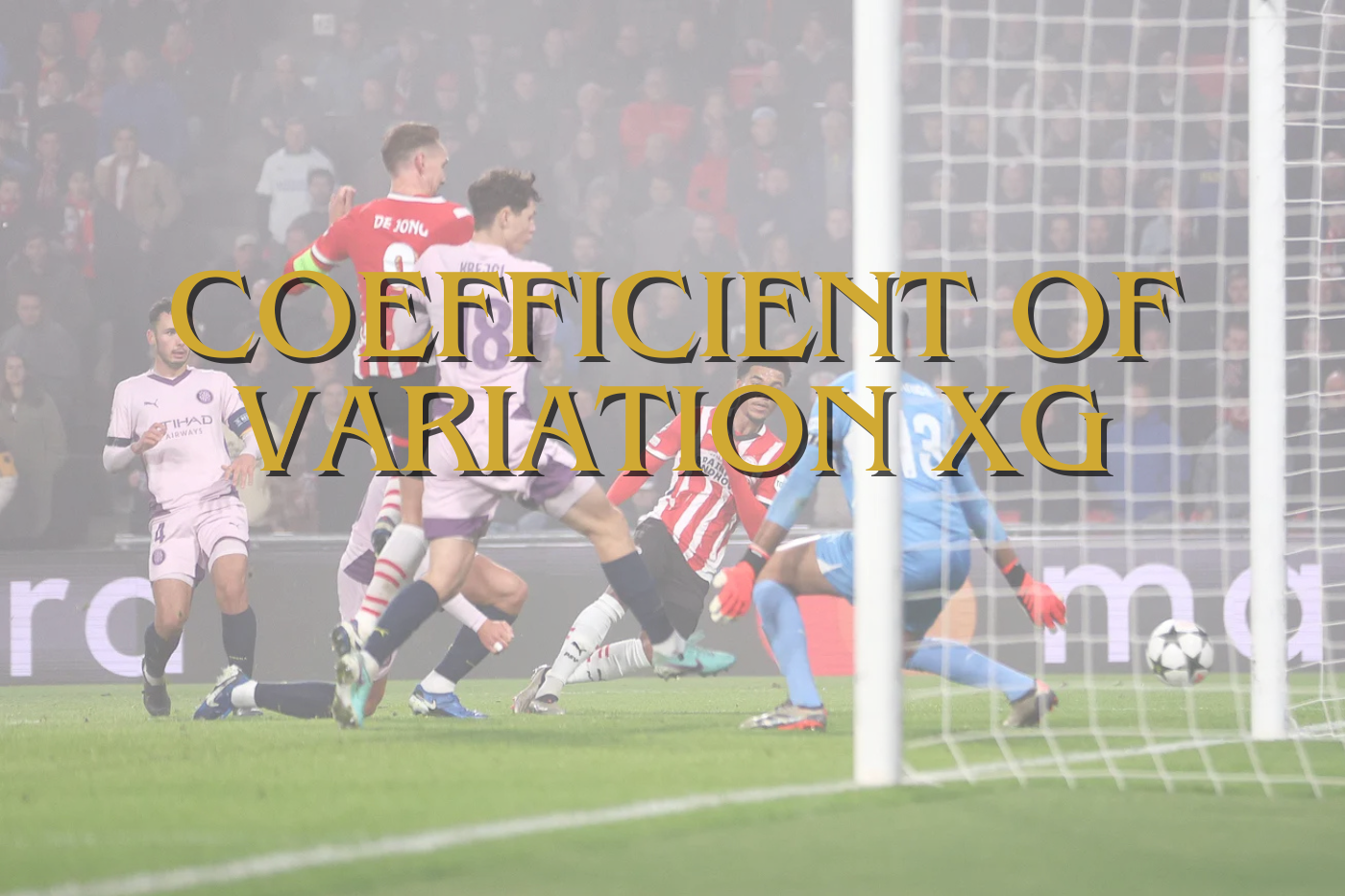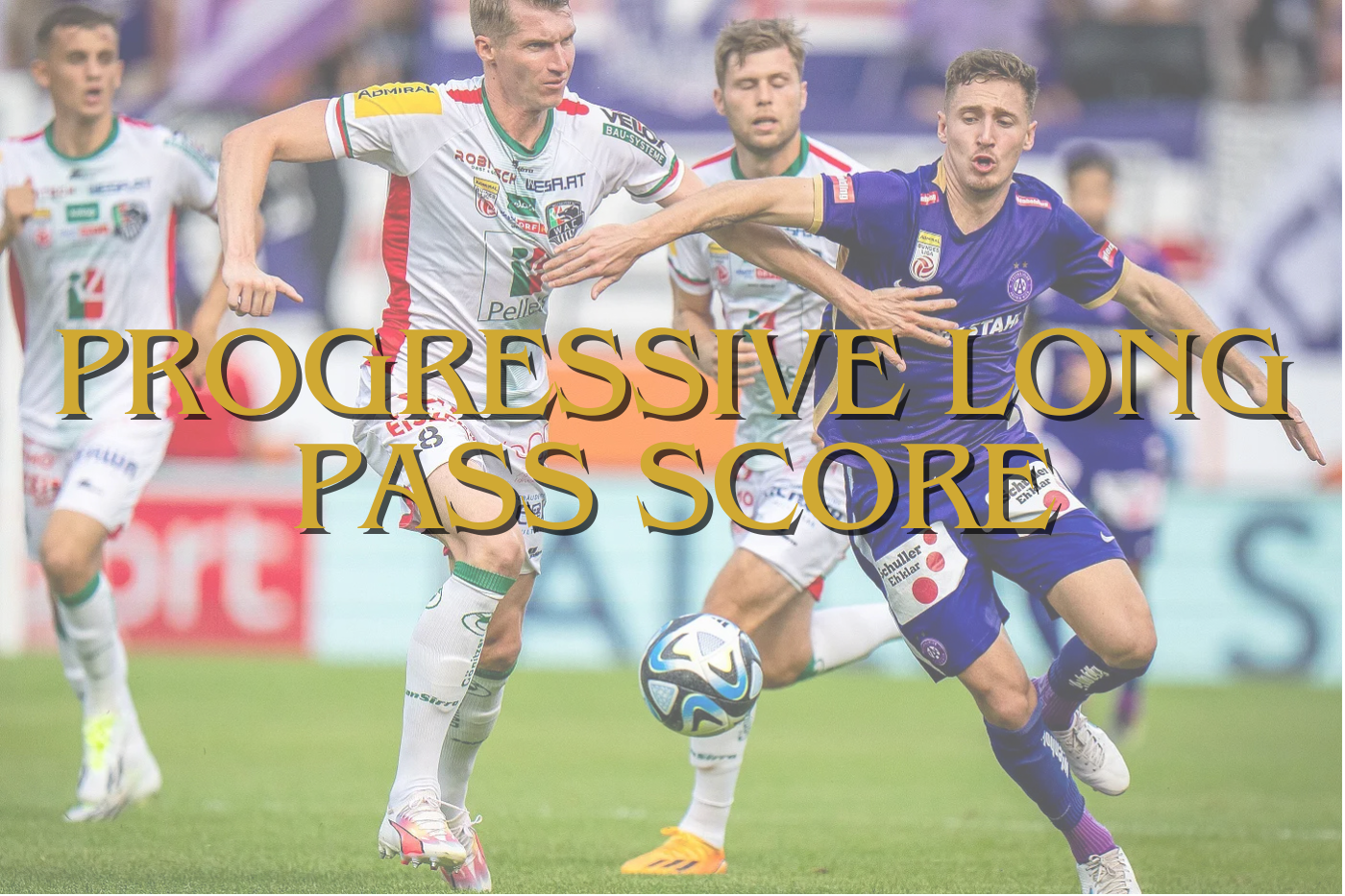I live in the Netherlands and that’s definitely not a surprise to many, but it does make me feel a bit weird towards Belgian football. I’ve always been told that we are ‘better’ than Belgian football and we should always strive to be better than them. I’m not sure this is because of historic sentiment or banter, but this has clouded me for a long time. Not anymore, I genuinely love Belgian football and that’s why I started to look at the leagues more closely.
In this set-piece analysis my eyes turn towards the attacking set-pieces of OH Leuven, playing in the Jupiler Pro League. They have been very interesting in their attacking routines, but in this piece I’m trying something different too.
First, I will look at the generated expected goals per corner per 90. I will look at their last 12 games to do that. After that I will look at the average expected goals generated per 90 per corner type, which I will explain later on. Then, I will have a look at the deliveries of the last 50 corners in those 12 games, to show where the first contact is and when a shot has been released. And finally, I will look at the successful corner routines during the 2020-2021 season.
Expected goals per corner
OH Leuven vs Waasland Beveren
| Game | Side | Foot | Swing | Zonal structure | Length | Zone | xG | Goal | Minute |
| Waasland-Beveren | Right | Left | In | Two man | Short | Central | 0 | No | 7 |
| Waasland-Beveren | Left | Right | In | Two man | Long | Central | 0,18 | No | 35 |
| Waasland-Beveren | Left | Right | In | Two man | Long | Front post | 0 | No | 64 |
| Waasland-Beveren | Right | Right | Out | Two man | Long | Central | 0,24 | No | 87 |
| Waasland-Beveren | Right | Right | Out | Two man | Short | Front post | 0 | No | 93 |
In the table above we see the attacking corners conducted in the game against Waasland-Beveren. We see that there is a total of 0,42 xG generated from attacking corners in this game and that both of these corners were long and delivered to the central zone of the penalty area.
OH Leuven vs Cercle Brugge
| Cercle Brugge | Right | Right | Out | Two man | Long | Far post | 0 | No | 22 |
| Cercle Brugge | Right | Left | In | Three man | Short | Front post | 0 | No | 26 |
| Cercle Brugge | Left | Right | In | Two man | Long | Far post | 0 | No | 30 |
| Cercle Brugge | Left | Left | Out | Two man | Short | Central | 0,06 | No | 52 |
| Cercle Brugge | Left | Right | In | Two man | Long | Central | 0 | No | 52 |
| Cercle Brugge | Left | Right | In | Two man | Long | Central | 0 | No | 54 |
| Cercle Brugge | Right | Right | Out | Two man | Long | Far post | 0 | No | 59 |
| Cercle Brugge | Right | Right | Out | Two man | Long | Central | 0 | No | 69 |
| Cercle Brugge | Left | Right | In | Three man | Short | Central | 0 | No | 92 |
In the table above we see the attacking corners conducted in the game against Cercle Brugge. We see that there is a total of 0,06 xG generated from attacking corners in this game and that the particular corner in questions was conducted from the left and played short, after which it was delivered to the central zone.
OH Leuven vs KRC Genk
| Genk | Right | Right | Out | Two man | Long | Central | 0 | No | 16 |
| Genk | Left | Right | Out | Five man | Short | Front post | 0,01 | No | 56 |
| Genk | Right | Right | Out | Five man | Short | Front post | 0 | No | 64 |
| Genk | Left | Left | Out | Three man | Short | Front post | 0 | No | 70 |
| Genk | Right | Right | Out | Six man | Long | Central | 0 | No | 77 |
| Genk | Right | Right | Out | Five man | Short | Far post | 0,07 | No | 79 |
| Genk | Left | Right | In | Five man | Short | Front post | 0 | No | 80 |
In the table above we see the attacking corners conducted in the game against Genk. We see that there is a total of 0,08 xG generated from attacking corners in this game and that the two corners in question were both short corners, with one delivered to the front post and one delivered to the far post.
OH Leuven vs KV Mechelen
| Mechelen | Left | Right | In | One man | Long | Central | 0 | No | 16 |
| Mechelen | Right | Right | Out | One man | Short | Central | 0,02 | No | 66 |
| Mechelen | Right | Left | In | One man | Short | Central | 0,01 | No | 84 |
In the table above we see the attacking corners conducted in the game against Mechelen. We see that there is a total of 0,03 xG generated from attacking corners in this game and that the two corners in question were both short corners, with both corners delivered to the central zone.
OH Leuven vs KAS Eupen
| Eupen | Left | Right | In | Four man | Short | Front post | 0 | No | 4 |
| Eupen | Left | Right | In | One man | Long | Central | 0 | No | 23 |
| Eupen | Left | Right | In | Four man | Short | Central | 0,05 | No | 59 |
| Eupen | Right | Left | In | Three man | Short | Central | 0 | No | 69 |
| Eupen | Right | Right | Out | Three man | Long | Far post | 0 | No | 91 |
| Eupen | Right | Right | Out | Three man | Long | Central | 0 | No | 97 |
In the table above we see the attacking corners conducted in the game against Eupen. We see that there is a total of 0,05 xG generated from attacking corners in this game and that the corner in question was played short and to a central zone.
OH Leuven vs Royal Antwerp
| Antwerp | Left | Right | In | Two man | Long | Far post | 0,02 | No | 21 |
| Antwerp | Right | Left | In | Three man | Short | Front post | 0 | No | 36 |
In the table above we see the attacking corners conducted in the game against Antwerp. We see that there is a total of 0,02 xG generated from attacking corners in this game and that the corner in question was played long and to the far post.
OH Leuven vs Club Brugge
| Club Brugge | Right | Right | Out | Two man | Long | Front post | 0 | No | 34 |
| Club Brugge | Right | Right | Out | Three man | Long | Central | 0 | No | 47 |
| Club Brugge | Right | Right | Out | Four man | Short | Front post | 0 | No | 52 |
| Club Brugge | Right | Right | Out | Four man | Short | Front post | 0 | No | 53 |
| Club Brugge | Right | Right | Out | Four man | Short | Front post | 0 | No | 68 |
In the table above we see the attacking corners conducted in the game against Club Brugge. We see that there is a total of 0 xG generated from attacking corners in this game and that there were no deliveries to the far post.
OH Leuven vs KV Kortrijk
| Kortrijk | Right | Right | Out | One man | Long | Central | 0 | No | 6 |
| Kortrijk | Right | Left | In | Two man | Short | Central | 0,13 | Yes | 20 |
| Kortrijk | Left | Left | Out | Four man | Short | Front post | 0 | No | 62 |
In the table above we see the attacking corners conducted in the game against Antwerp. We see that there is a total of 0,13 xG generated from attacking corners in this game and that the corner in question was played short and to the central zone. In the end this leads to a goal scored by Henry
OH Leuven vs Standard Liege
| Standard Liege | Right | Right | Out | One man | Long | Far post | 0,06 | No | 11 |
In the table above we see the attacking corners conducted in the game against Standard. We see that there is a total of 0,06 xG generated from attacking corners in this game and that the corner in question was played long and to the far post.
OH Leuven vs Beerschot
| Beerschot | Right | Right | Out | Three man | Long | Central | 0 | No | 10 |
| Beerschot | Right | Right | Out | Three man | Short | Front post | 0 | No | 33 |
| Beerschot | Left | Right | In | Three man | Long | Central | 0 | No | 61 |
| Beerschot | Left | Right | In | Two man | Long | Central | 0 | No | 80 |
| Beerschot | Left | Right | In | Three man | Short | Front post | 0 | No | 80 |
| Beerschot | Right | Right | Out | Four man | Short | Central | 0,04 | No | 81 |
In the table above we see the attacking corners conducted in the game against Beerschot. We see that there is a total of 0,04 xG generated from attacking corners in this game and that the corner in question was played short and to the central zone.
OH Leuven vs Charleroi
| Charleroi | Left | Left | Out | Five man | Short | Front post | 0 | No | 3 |
| Charleroi | Right | Left | In | Five man | Short | Central | 0,09 | No | 32 |
| Charleroi | Right | Right | Out | Four man | Long | Front post | 0 | No | 36 |
| Charleroi | Right | Left | In | Five man | Short | Front post | 0 | No | 37 |
| Charleroi | Right | Right | Out | Five man | Long | Central | 0 | No | 80 |
In the table above we see the attacking corners conducted in the game against Charleroi. We see that there is a total of 0,09 xG generated from attacking corners in this game and that the corner in question was played short and to the central zone.
OH Leuven vs KAA Gent
| Gent | Left | Right | Out | One man | Short | Front post | 0 | No | 30 |
| Gent | Left | Left | Out | Two man | Short | Front post | 0,13 | No | 66 |
| Gent | Left | Left | Out | One man | Short | Front post | 0 | No | 66 |
In the table above we see the attacking corners conducted in the game against Gent. We see that there is a total of 0,13 xG generated from attacking corners in this game and that the corner in question was played short and to the front post.
Average expected goals per corner type
| Corner type | Total xG | Average xG |
| Left | 0,45 | 0,038 |
| Right | 0,66 | 0,055 |
| Swing in | 0,48 | 0,04 |
| Swing out | 0,63 | 0,053 |
| Short | 0,61 | 0,051 |
| Long | 0,5 | 0,042 |
| Front post | 0,14 | 0,012 |
| Central | 0,82 | 0,068 |
| Far post | 0,15 | 0,013 |
| One man zonal | 0,09 | 0,008 |
| Two man zonal | 0,56 | 0,047 |
| Three man zonal | 0 | 0 |
| Four man zonal | 0,09 | 0,008 |
| Five man zonal | 0,17 | 0,014 |
| Six man zonal | 0 | 0 |
In the table above I’ve divided the corners into certain categories to assess how many xG has been generated per corner type. If we look at which side is most successful in generating that xG, then this is the right side. When we look whether short or long corners generate the most xG, then it is the short corner option.
When we have a look at which zone – the ball is being delivered into – generates the most xG in these games, then we can conclude that the central zone generates the most xG. Finally, if we look at the successful generating xG against certain zonal structures, we can conclude that OH Leuven generates the most xG against two player zonal structures in the six-yard box.
Successful corner routines
The analysis of the corners in video will happen below, but I have a few things to say. Against Kortrijk, there was a goal scored from a corner – but that doesn’t show up in the delivery. The reason for this is that there have been a few passes before the cross came, hence the position of every player is different to the corner set up.
What I also wanted to say is that the games against Waasland-Beveren and Gent, are not the same as analysed above with the xG generated per game.
OH Leuven vs Kortrijk
https://player.vimeo.com/video/545028158?dnt=1&app_id=122963
In the video above we see attacking corner routine #1 from OH Leuven in their game against Kortrijk. The corner comes from the right from a left-footed player, meaning the ball will swing in towards the six-yard box, rather than swing out. The position of the runners is more advanced because the ball will go towards the six-yard box.
In the penalty area we see two players on the right closer to the kick taker, two players just inside the penalty area, and one player on the penalty spot. Just outside the penalty are we have another player who will anticipate any cleared balls and/or tasked with the first line of the rest-defence. There also is an option for the short pass option, to take the corner quickly.
As soon as the ball is kicked we see that Leuven opts for the short pass option and that players are overlapping on the right and left side from the player on the ball. The ball goes into the central zones of the penalty area where we see the highlighted player winning the duel. He is strong in the air and lures the defending players to him, creating space for the player at the far post. Eventually the latter gets the ball and scores a great goal for Leuven.
OH Leuven vs Mouscroun
https://player.vimeo.com/video/545036055?dnt=1&app_id=122963
In the video above we see attacking corner routine #2 from OH Leuven in their game against Mouscroun. The corner comes from the left from a left-footed player, meaning the ball will swing out towards the penalty box, rather than swing in. In this example it’s quite clear that the ball will be played short to the player close to the kick taker.
In the penalty area, we see two players just inside the penalty area and also two players on the penalty spot, as well as another player in the six-yard box. Just outside the penalty area, we have another two players who will anticipate any cleared balls and/or tasked with the first line of the rest-defence. There also is an option for the short pass option, to take the corner quickly – which is obviously used in this example.
As soon as the ball is with the player that receives the short pass, he prepares to swing the ball into the box. We see a total of five players preparing to attack the cross. The ball does land in the central to far post zone, after which the ball is headed to the near post again. The three players at that near post have outpaced their markers and have space and time to score a goal.
OH Leuven vs STVV
https://player.vimeo.com/video/545056933?dnt=1&app_id=122963
In the video above we see attacking corner routine #3 from OH Leuven in their game against STVV. The corner comes from the right from a left-footed player, meaning the ball will swing in towards the penalty box, rather than swing out. In this example it’s quite clear that the ball will be played short to the player close to the kicktaker.
We have one player for the short pass option and one player just arriving outside the penalty area, who will make a run in the penalty area. Just inside the penalty area we have a unit of four players who are tasked with making runs into the six-yard box, and one player is on the left just outside the six-yard box.
As soon as the ball is kicked, into the player arriving in the penalty area, movement in that unit starts towards the central zone. The pass is played directly into the six-yard box and confuses the defensive organisation of STVV. At the end, the highlighted player gets at the end of the pass and converts the pass into a goal.
OH Leuven vs KAA Gent
https://player.vimeo.com/video/545072999?dnt=1&app_id=122963
In the video above we see attacking corner routine #4 from OH Leuven in their game against Gent. The corner comes from the right from a left-footed player, meaning the ball will swing in towards the penalty box, rather than swing out. In this example it’s quite clear that the ball will be played short to the player close to the kicktaker.
We see the player for the short pass option who receives the ball. In the box we see three players who are man-marked, and are going to make runs into the six-yard box when the cross comes from the right. Just outside the box we see two players tasked with cleared balls and/or the first line of defence in case of a counter-attack.
The player who receives the ball passes the ball back to the corner taker who has progressed more to the left side. From that position, he can swing the ball into the far post where a unit of four players made runs forward, but the player doesn’t cross it. Instead, he shoots and scores against Gent.
OH Leuven vs Waasland-Beveren
https://player.vimeo.com/video/545080363?dnt=1&app_id=122963
In the video above we see attacking corner routine #5 from OH Leuven in their game against Waasland-Beveren. The corner comes from the right from a left-footed player, meaning the ball will swing in towards the penalty box, rather than swing out. In this example it’s quite clear that the ball will be played short to the player close to the kicktaker.
We see the player for the short pass option who receives the ball. In the box we see six players who are man-marked, and are going to make runs into the six-yard box when the cross comes from the right. There is a two player zonal structure in the six-yard box, so the delivery needs to good as well as the runs in that six-yard box.
The player who receives the ball passes the ball back to the corner taker who has progressed more to the left side. From that position, he can swing the ball into the far post where a unit of four players made runs forward, but the player doesn’t cross it. Instead he makes moves forward into the penalty area and shoots to the far post. His shot is successful and he scores for OH Leuven.
Final thoughts
OH Leuven was often mentioned as one of the most exciting teams to look at in terms of attacking corner routines, and they were absolutely right. Not only were there successful routines widely varied, but to look at which type of corner generated the most expected goals was a new thing for me to look at, but a very happy development as well.







